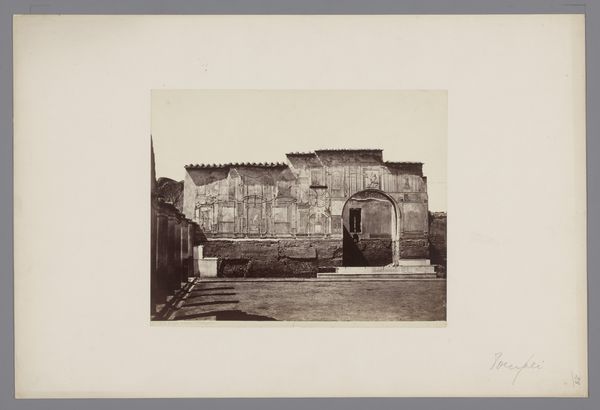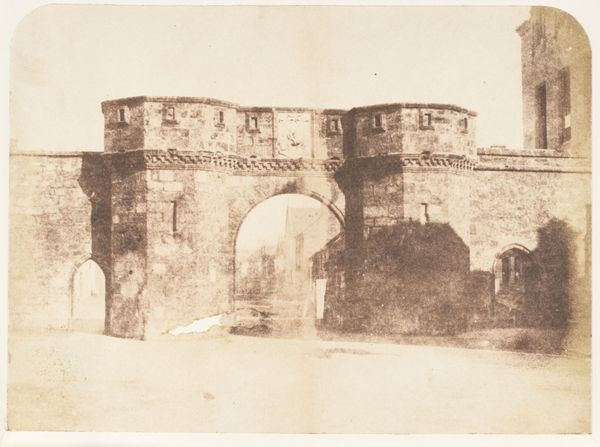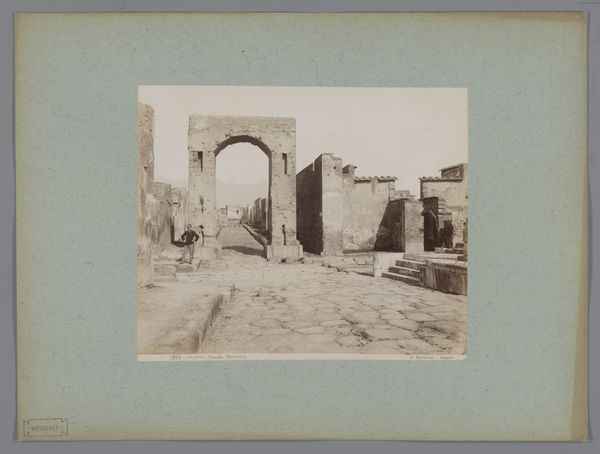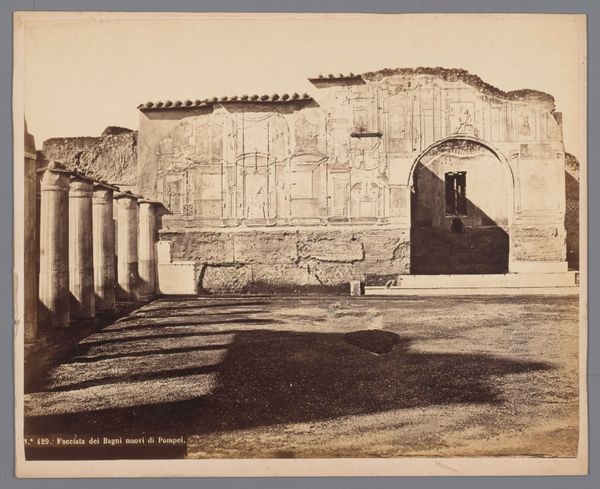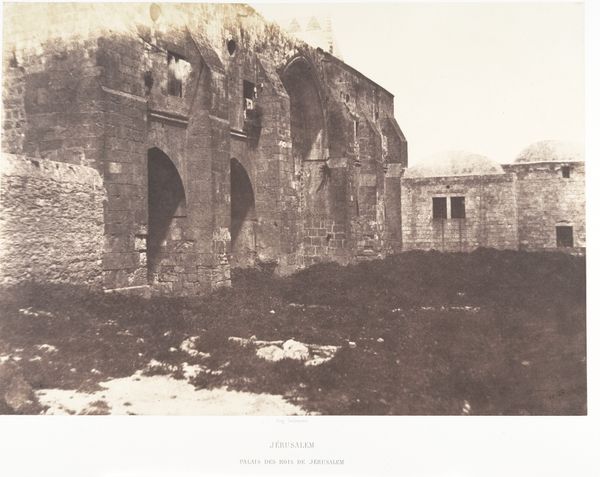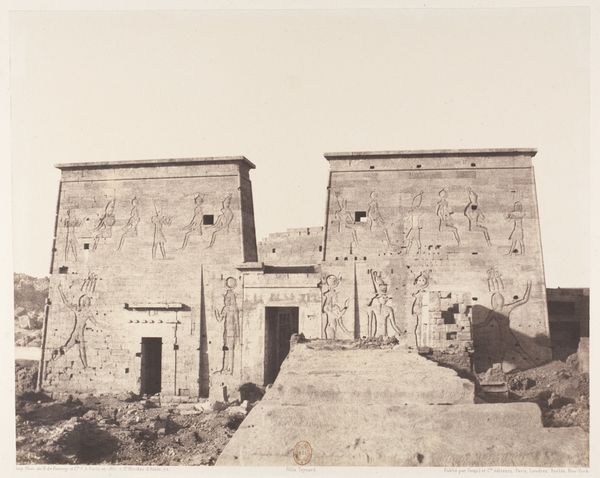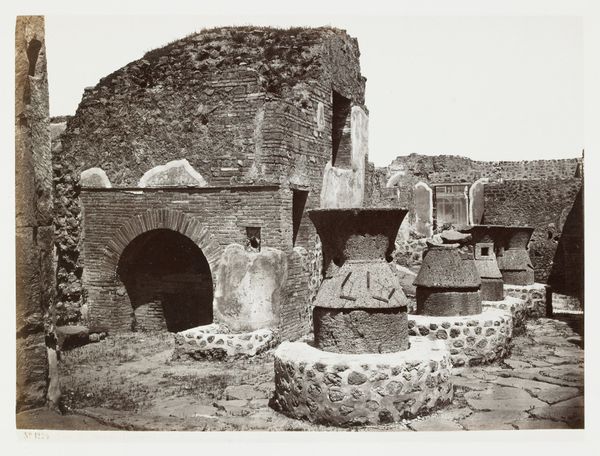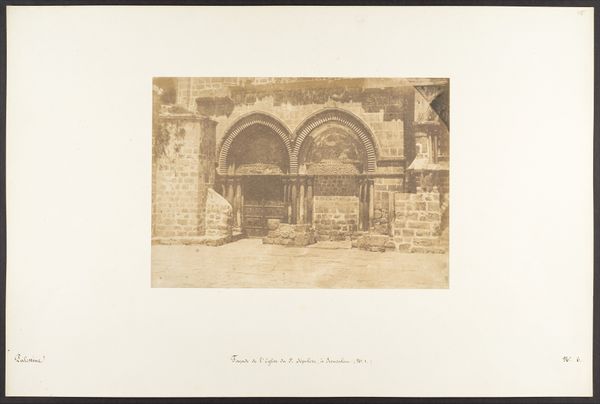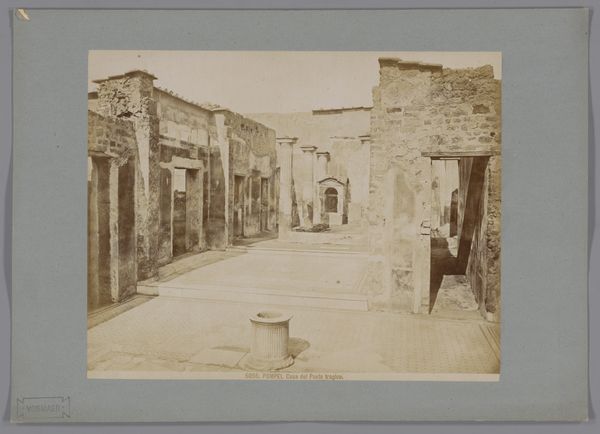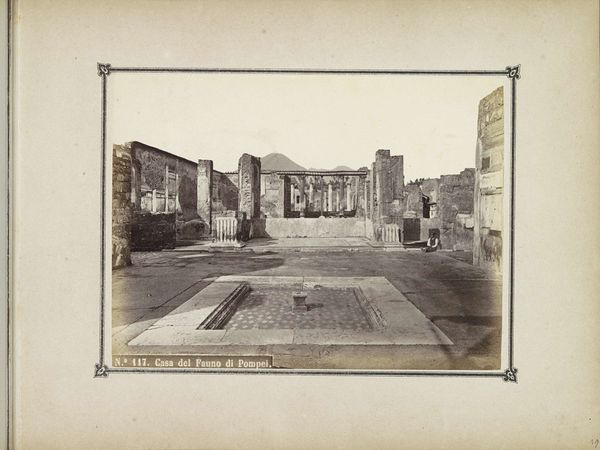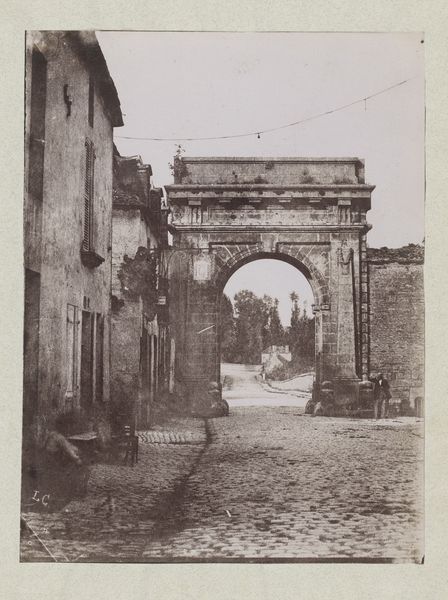
print, photography, site-specific
# print
#
photography
#
ancient-mediterranean
#
site-specific
#
cityscape
#
building
Dimensions: Image: 21.6 x 28.1 cm (8 1/2 x 11 1/16 in.) Mount: 46 x 60.5 cm (18 1/8 x 23 13/16 in.)
Copyright: Public Domain
Curator: What strikes me immediately is the muted palette—the almost monochromatic range lends the photograph an austere and timeless quality. Editor: I can't help but feel this sense of history seeping from the stones; like I am standing on the precipice of centuries past, but perhaps I'm just romanticizing ruins again. Curator: The play of light and shadow also contributes significantly to the overall composition. Notice how the subtle gradations of tone delineate the architectural forms, highlighting the texture of the weathered stones and casting a contemplative atmosphere over the entire scene. We're observing Édouard Baldus’s photograph, "Nîmes, Porte d'Auguste," taken between 1863 and 1865, currently housed at the Metropolitan Museum of Art. Editor: Yes! I love that "contemplative atmosphere". The ruins sort of have this quiet, enduring presence and feel incredibly weighted by time and erosion—though you can also observe this intrusion of the modern city encroaching it from the top. It feels sort of lonely, isolated somehow, even in a busy urban context. Curator: Indeed. Baldus has carefully structured the image to emphasize the enduring nature of Roman architecture and he positions the viewer to recognize the intersection of past and present. One could deconstruct the framing as an attempt to illustrate the fragmenting and the preservation of civilization as it continues into the present, in which Baldus has intentionally employed symmetry and linearity. Editor: True, it is an incredible document. You notice these small, human elements poking through, like that bicycle, offering this funny tension to the picture and I am forced to ask, "Who is its owner and where did they come from? Curator: I find Baldus's methodical and detailed approach a brilliant synthesis of art and historical record. In his work, we perceive a deep understanding of both architectural form and the transformative power of photography as an art form and historical preservation. Editor: Right, maybe Baldus is attempting to demonstrate that ruins, in a way, possess the power to provoke contemplation. It sort of nudges the observer to muse on time, memory, and transformation, no? I enjoy these questions posed. Curator: Well put, Baldus’ photograph transcends simple documentation. It stands as an analytical framework. It gives one pause, compelling us to engage in this historical context critically and meaningfully. Editor: Precisely! These stones still murmur, don’t they?
Comments
No comments
Be the first to comment and join the conversation on the ultimate creative platform.
